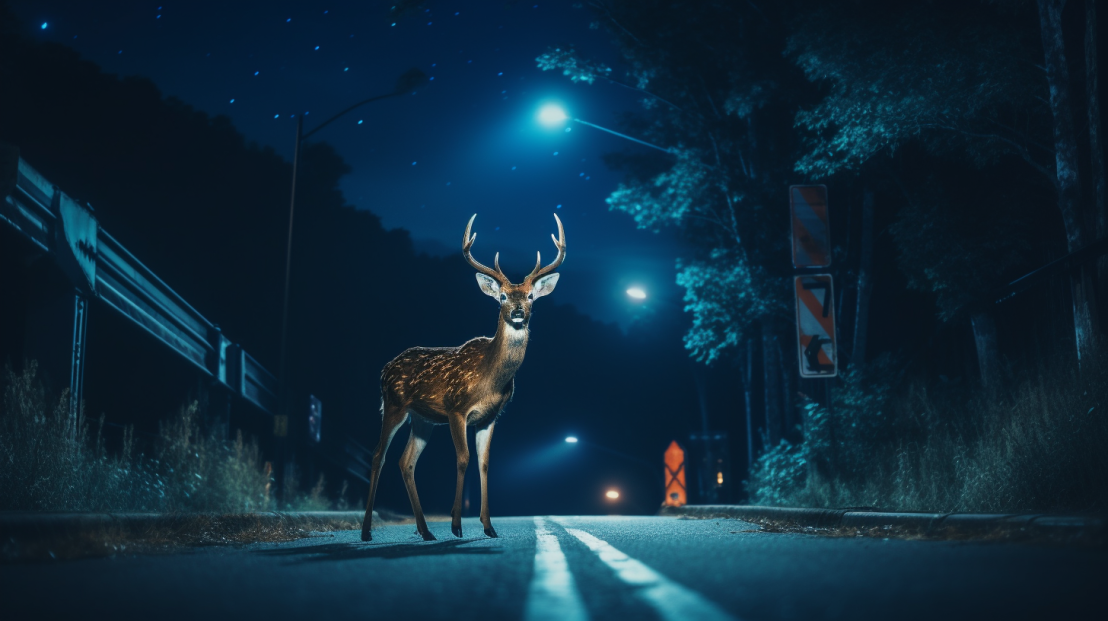When the term “Deer-Human Crises” is brought up, one might easily picture a deer caught in headlights, quite literally. From vehicle collisions to crop damage, the confrontations between deer and humans are escalating at an alarming rate, primarily due to urban encroachment into wildlife habitats. Simultaneously, deer populations are rapidly growing and adapting to the remaining patches of urban greenery. Quite frankly, to avoid the phrase “a deer in the headlights” becoming our social norm, we must explore strategies for addressing these crises.
Understanding the Deer-Human Conflict Dynamics
Rise of Urbanization and Loss of Natural Habitats
The most significant driving factor behind these crises lies in our own backyards—urbanization. The sprawling urban expanse is robbing away the natural habitats of many wildlife species, deer being one among them. Concrete jungles are replacing lush green forests at an unprecedented speed, forcing deer to adapt to our surroundings.
Yet, hope exists in the form of “wildlife corridors,” areas preserved or created to connect isolated patches of wildlife habitats. These corridors encourage safer and more natural movements of deer, reducing the chances of them wandering into human settlements. But, making a deliberate choice to create and protect these wildlife corridors makes all the difference in:
- Halting the shrinking of wildlife habitats
- Reducing human-deer encounters
Deer Adaptability and Reproduction Rate
It’s not only the shift in their dwellings that causes crises, but also the rate at which the deer populations are growing. Deers happens to be an adaptable species with high reproduction rates, which combined with a lack of natural predators in urban environments, can lead to population booms.
Indeed, their unfortunate adaptability to human environments, along with their ability to reproduce offspring that can survive in these new surroundings, exacerbates the deer-human conflicts.
Tools for Addressing the Deer-Human Crisis
Urban Planning and Green Spaces
Smart urban planning plays a pivotal role in mitigating deer-human conflicts. We need plans that harmonize human needs with ecological aspects—our cities need green spaces. Apart from beautifying the city, these spaces provide mini-refuges for urban wildlife, including deer.
However, more than just random patches of greenery, the arrangement of these spaces is a crucial consideration. Connecting green spaces can create wildlife corridors within urban settings, helping deer move more naturally even in cities. Strategies that city administrations could consider include:
- Restrict urban sprawl
- Foster native plant growth
- Create connected uninterrupted green spaces
Deer Management Techniques
Apart from strategies directly related to urban planning and habitat preservation, various techniques exist for managing deer populations. These range from hunting to sterilization and relocation.
Hunting can be a controversial solution but is effective in controlling deer population if regulated correctly. Sterilization, a more humane method, can be resource-intensive and tricky to implement on a large scale. Relocation, while seemingly straightforward, can lead to overcrowding and other ecological issues in the release areas. Therefore, the most appropriate deer management technique largely depends on local contexts and regulations.
Case studies of Successful Deer-Human Coexistence Strategies
There are several shining examples of regions that have successfully mitigated deer-human conflicts. For instance, the city of Nara in Japan is known for the hundreds of tame deer roaming its streets. Nara implemented effective strategies, resulting in a mutually beneficial relationship between its human population and the deer.
On an entirely different continent, the city of Helena, Montana implemented an urban deer management plan focusing on education, non-lethal management, and controlled urban hunting, resulting in significantly reduced deer-related issues.
Learning from these examples and implementing strategies suitable to local contexts can undoubtedly help us better manage these crises.
Joke: What sound does a space deer make? Buck Rogers!
The Way Forward
Addressing Deer-Human Crises demands striking a delicate balance between human progress and nature conservation. Initiatives aiming to achieve this balance deserve our support. When we think about the future, the image we should aspire for is not turning deer into strangers in our urban habitats, but rather, creating environments where we coexist and thrive together.
Reflecting on effective strategies and adopting appropriate measures to manage deer populations will prevent these crises from spiraling further. It’s crucial to regularly reassess the measures taken and adjust them as necessary. With unified efforts by communities, city administrations, wildlife experts, and individuals, an equilibrium between deer and human populations can be realistically achievable.
In conclusion, addressing the deer-human crises is not just about managing deer populations, but also about altering the urban landscapes we ourselves have created. Doing so will not only mitigate the crises at hand but will also foster a stronger bond between us and the world we share with countless other species.
FAQ
- Q: What factors are driving the Deer-Human Crises?
A: Rapid urbanization and habitat loss, the high adaptability, and reproduction rate of deer.
- Q: What measures can be taken to address these crises?
A: Strategies like urban planning that incorporates green spaces, wildlife corridors, and various deer management techniques can significantly contribute to mitigating these crises.
- Q: Can these measures guarantee a long-term solution to the crisis?
A: While these measures can significantly help manage deer population and alter unfavorable urban landscapes, their long-term success depends on constant reassessment and adaptation to changing local contexts.
- Q: Which cities have successfully managed the deer-human conflicts?
A: Cities like Nara (Japan) and Helena (Montana, USA) have implemented effective strategies resulting in successful deer-human coexistence.
Hey there, fellow nature enthusiasts! I’m Mark Gray, the passionate owner of OutdoorAnimals.com, a hub dedicated to uncovering the incredible world of outdoor animals. Whether you’re a hiker, a four-wheeler, or just someone who revels in the beauty of the great outdoors, you’re in the right place. I seek to understand all varieties of animals, from the great elk to the simple mouse, my goal is to write and share this knowledge with the public.

